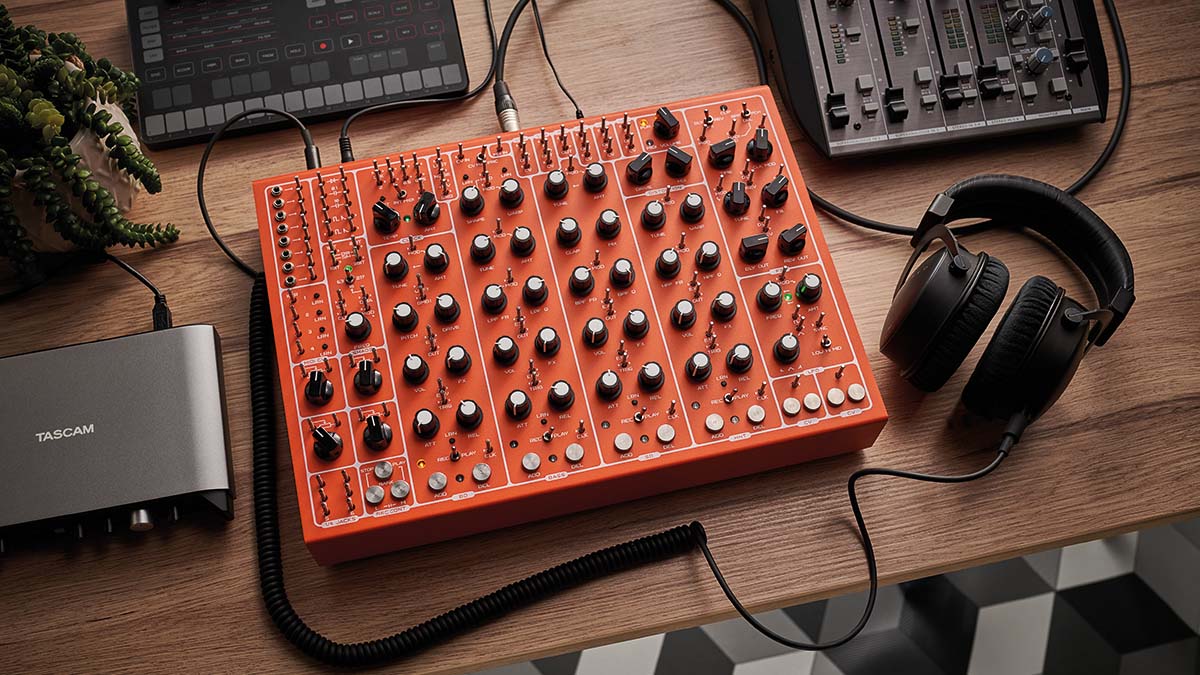MusicRadar Verdict
Pulsar-23 is pretty eccentric, but it’s also one of the most powerful, creative and inspiring instruments on the market right now.
Pros
- +
Utterly unique design, with endless creative options.
- +
Sounds great for both percussive and melodic sounds.
- +
Excellent DSP effects.
- +
Enough I/O and utilities to act as a handy modular hub – even without considering the synth engine/effects.
Cons
- -
No standard step sequencer.
- -
Workflow is complex and, at times, a bit unpredictable.
- -
Expensive.
MusicRadar's got your back
What is it?
The brainchild of Soma Labs founder Vlad Kreimer, Pulsar-23 is one of the most fascinating, inspirational and – at times – bewildering electronic instruments we’ve tried in a long time.
Described as an ‘Organismic Drum Machine’, this is a four-part percussion synthesizer based around principles similar to those of Soma’s cult-classic Lyra 8 – replicating the interactions within a living organism through its non-linear design and multi-approach interface.
At a basic level, Pulsar-23 is a four-voice semi-modular percussion synth, with generators labelled Bass Drum, Bass, Snare Drum and Hi-Hat. The first two of these are more tonal, and it’s possible to play them melodically using MIDI and/or CV routings. The Bass Drum is a tunable triangle waveform with adjustable pitch sweep, capable of classic, meaty analogue kick sounds, but great for longer bass sounds when sustained or played melodically.
The Bass is a simple analogue monosynth but with a secondary Percussive mode with a slightly noisier timbre. Each of Pulsar’s sounds has a distinct sonic palette and – along with identical amp envelope, volume and effect send controls – its own set of parameters to adjust and modulate.
For the Bass drum, these include controls for tuning and pitch sweep, along with enigmatic patch points labelled ‘WTF?’ and ‘OMG!’. The Bass has a resonant low-pass filter, as well as Shape and Warp parameters controlling initial osc shape and waveshaping respectively.
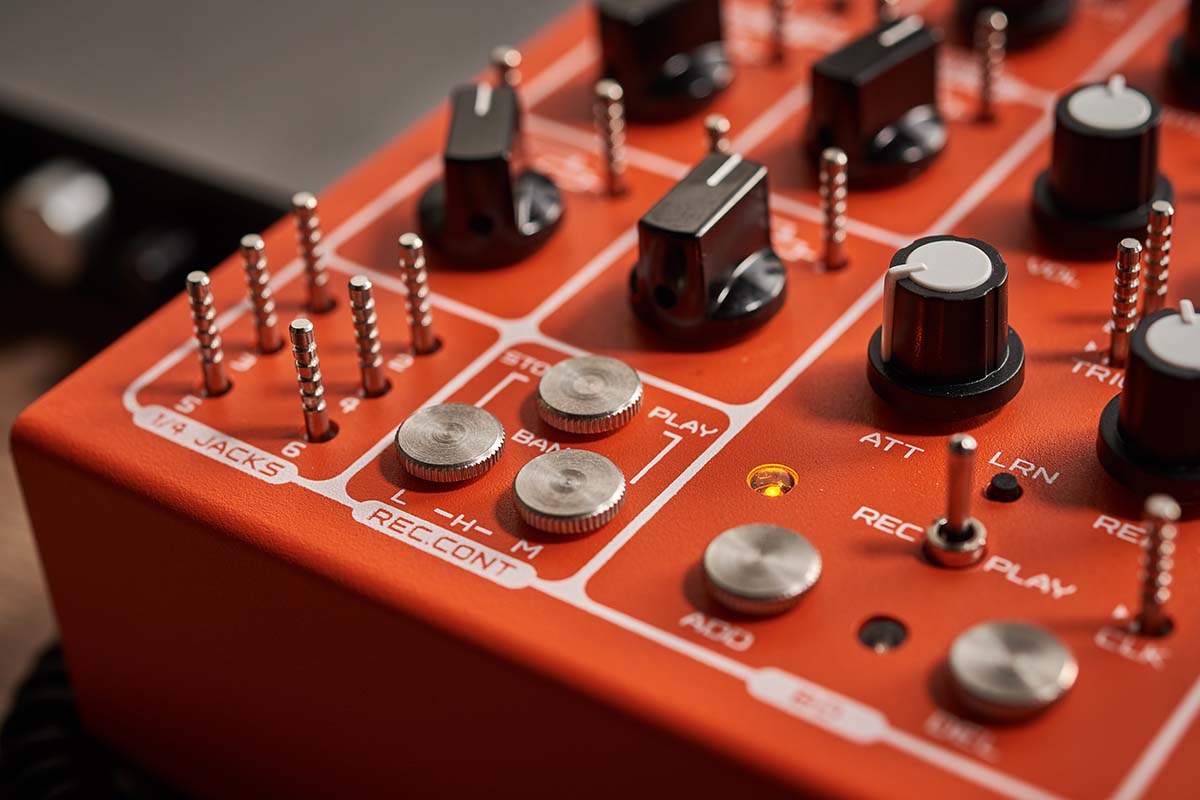
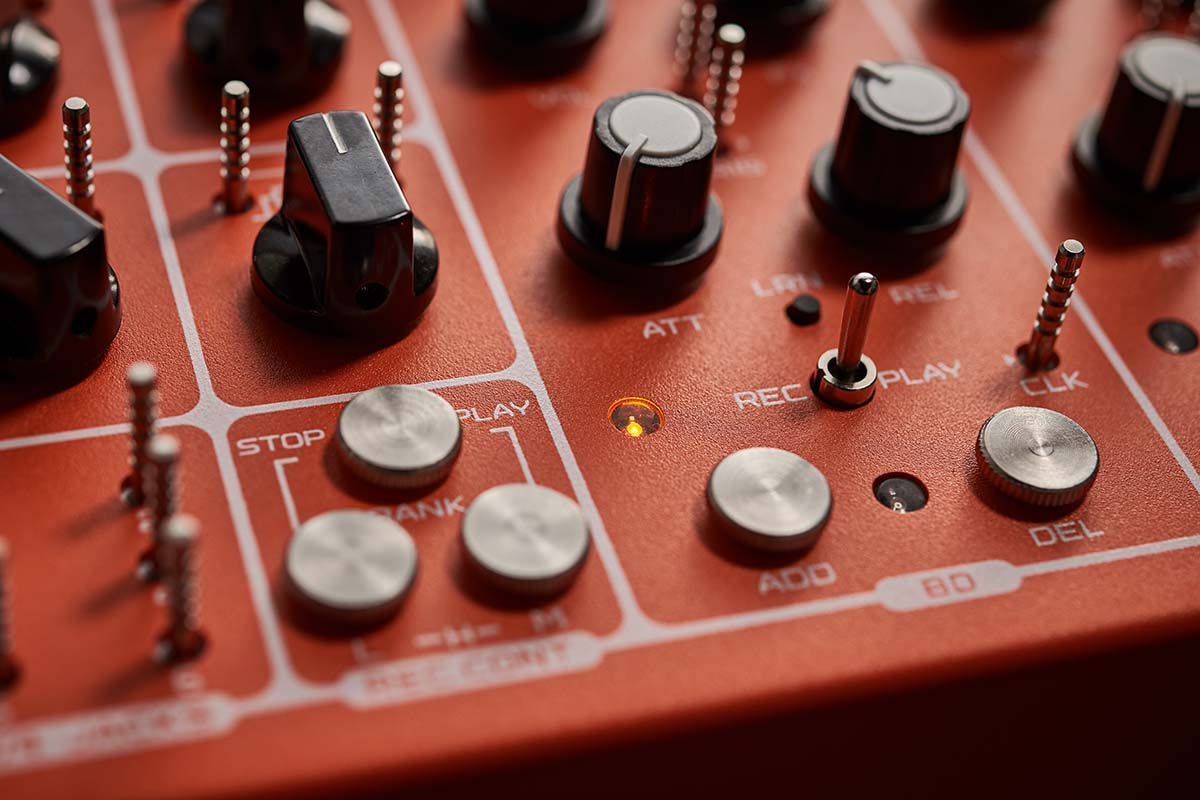
The Snare Drum is primarily noise-based, with a mix control adjusting the balance between pink noise and a more characterful spectral noise mode. It also has a Clap parameter, which introduces a staggered attack to the sound and can be pushed to a fairly extreme length, creating interesting percussive tones.
These cursory descriptions of the sound generators perhaps don’t do each justice – the more you dig into the voicing controls for each, the more range reveals itself
Finally, the hi-hat generator is a fairly classic, metallic-sounding synth hat. It features a resonant high-pass filter, tuning and a Warp control that adjusts the noise spectrum. Combined with the amp envelope – an AR design, as with all the drum sounds – this Warp parameter can push the hat into shaker or synthesized tamb zone.
These cursory descriptions of the sound generators perhaps don’t do each justice – the more you dig into the voicing controls for each, the more range reveals itself, particularly once you factor in the semi-modular patch points. Those ‘WTF?’ and ‘OMG!’ inputs, for example, are like hands-on circuit bending tools – there’s not space to go into them here, but Kreimer has produced some excellent in-depth YouTube tutorials.
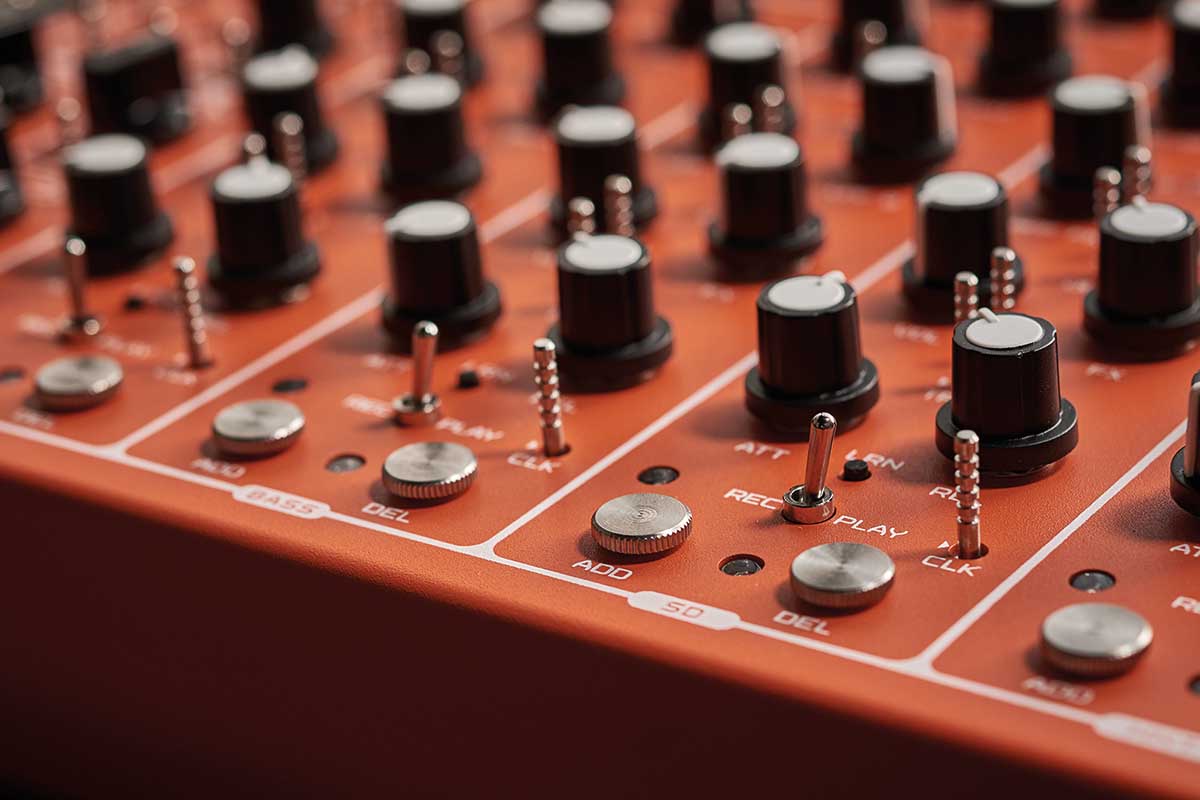
Connectivity, both internal and external, is key to what makes the Pulsar-23 special. One of the most noticeable elements of the design is the extensive range of pins spread across the entire user interface.
These are patch points for re-routing the various sound elements and utilities, which can be done either using the supplied crocodile clips or by placing fingers across pins to let your body itself conduct signals – with more expressive, less predictable results. Pulsar-23 is designed with a brilliantly open, experimentally-minded ethos.
As with most modular gear, no distinction is made between control and audio signals, so in many cases, these can be used interchangeably to hack extra functions out of the sound engine – for example, repurposing the clock or LFO as sound generators, or using the Bass Drum as a modulation source.
Pulsar-23 is set up to eliminate the risk of ‘wrong’ connections too – although it responds to voltage signals between 0 and 10 volts, the permissible voltage range for its inputs is -20 to +20 volts, and all inputs and outputs are protected from overloads. As a result, you can pretty much approach Pulsar-23 with a ‘try anything’ mindset, patching elements internally and externally at random just to see what happens.
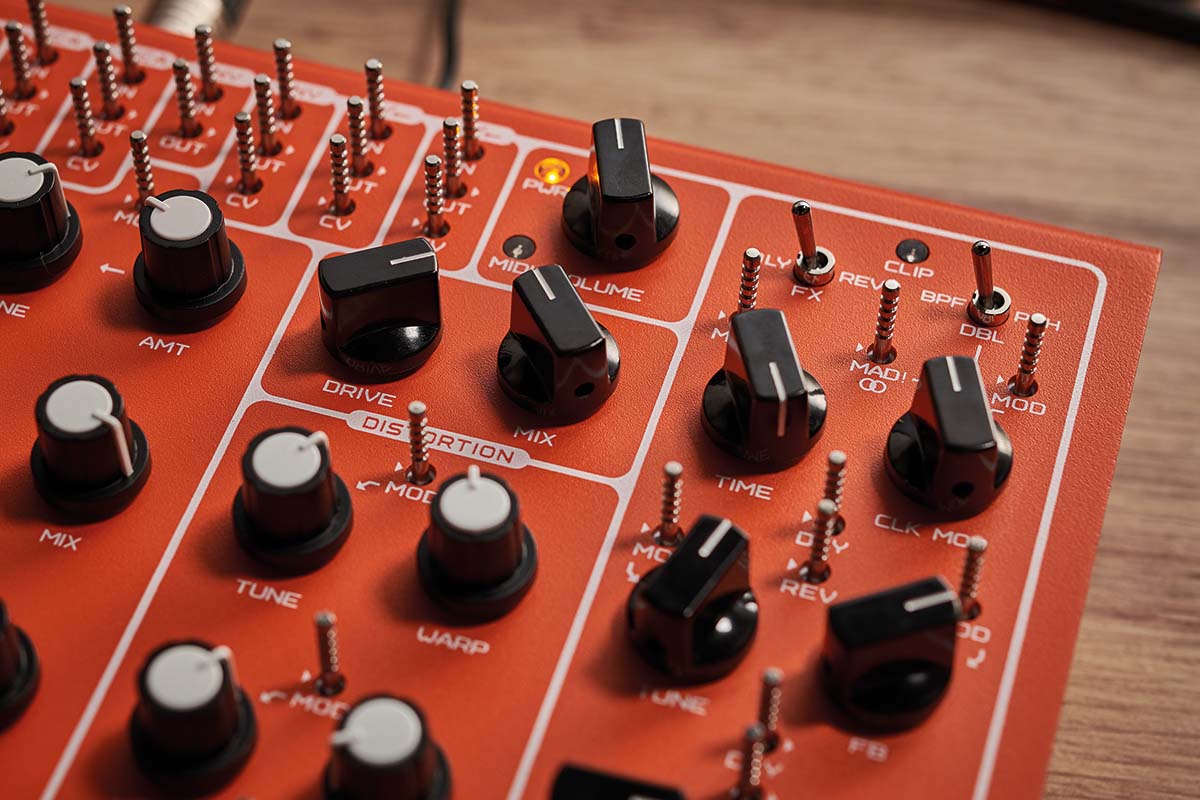
Interestingly, although most of Pulsar’s pins are labelled as either inputs or outputs, like most standard semi-modular gear, several are designed to be able to acts as both. For example, the envelope generators for each sound module have trigger connections that are both input and output, capable of either receiving a signal to trigger the envelopes or outputting triggers themselves, and their behaviour will alter depending on what’s connected to them.
Although the system of pins and crocodile clips aren’t particularly compatible with external gear by themselves, Pulsar-23 has no shortage of tools for interfacing with the outside world. On the front panel are eight modular-style 3.5mm patch points, joined by six full-sized jacks on the rear (in addition to the master output jack).
Each of these connections has its own pin, meaning they can be routed to/from any available synth element and act as either an input or output for audio or control purposes. On the audio front, this abundance of I/O is a nice touch as it lets users do creative things like creating stereo outputs, route audio through Pulsar’s engine and effects, and create unusual feedback loops.
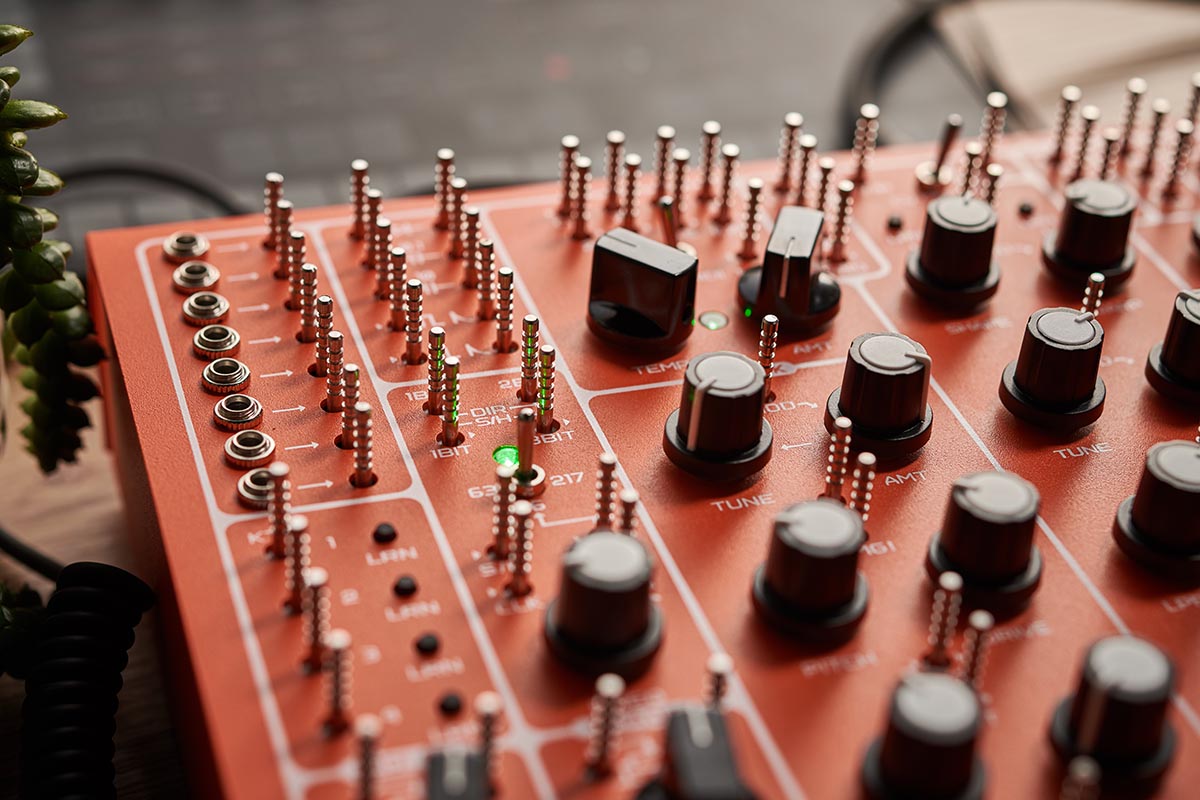
On the control side, Pulsar offers not only I/O but an abundance of modular-style utilities, including attenuators, inverters, MIDI to CV conversion, two independent VCAs, clock dividers, diodes, capacitors, pulse shapers and more. There are also a pair of routable touch sensors, which can send a variable CV created by placing a finger across their two pads. In fact, for modular users, Pulsar makes a strong case for itself as an incredibly well-equipped utility hub, even ignoring its sound engine.
This flexibility carries across to the ways Pulsar can be controlled. While there’s no traditional step sequencer, as found on most standard drum machines, there are many ways to trigger the four modules. There’s an external MIDI port on the rear, and a handy MIDI-learn feature, allowing Pulsar to be easily triggered from a DAW or external MIDI sequencer.
When used with external MIDI control, the Bass module can be played melodically and sustained to create drones and melodies (it’s possible to control the Bass Drum pitch via CV, or via MIDI using the onboard MIDI-CV converter). When used with MIDI all sounds gain full velocity sensitivity and Bass responds to pitch bend and portamento.
Shaos Theory
Pulsar’s Shaos tool is a pseudo-random generator designed to generate spontaneous rhythmic patterns. Its name is a portmanteau of shift register and chaos, the two primary elements that make up its design. It can be used to make looping sequences of pulses of either 16, 63 or 217 pulses in length, which can be synced to the internal clock or an external one.
There are multiple outputs, offering 1bit and 2bit modes – which alter the number of states the output signal has – and 1bit and 3bit sample and hold outputs. This kind of sequence generator has many uses, but one of the simplest is as a way to generate interesting hat or shaker patterns. The Shaos clock can run into audible rates too and can be modulated, so you can even use it for oddball modulation synthesis effects.
Performance and verdict
On the top panel, each module has a trigger connection (both input and output), letting each sound be triggered using external CV or internal sources such as the clock divider or LFO. The most interesting way to sequence the sounds is using Pulsar’s trigger sequencers.
These are loop recorders that record, play and overdub triggers input using metal touchpads. By default they’re sync’d to the internal clock, but each can be clocked separately to make unusual polyrhythms. The sequencers can record three velocity levels and have a simple quantise function that snaps triggers to a 16-step grid in the loop.
Pulsar-23 is at its most exciting, however, when these approaches are used simultaneously. You can say, send MIDI and/or CV to a module at the same time as use the loop recorder, or using the trigger in/out pins to chain one sound to another.
As is the case with much of the Pulsar-23 workflow, results can be unpredictable. While this sense of ‘organic’ unpredictability is kind of the point, and it can certainly make Pulsar-23 feel creative and inspiring, it may irk some users with its tendency to often behave not quite as expected.
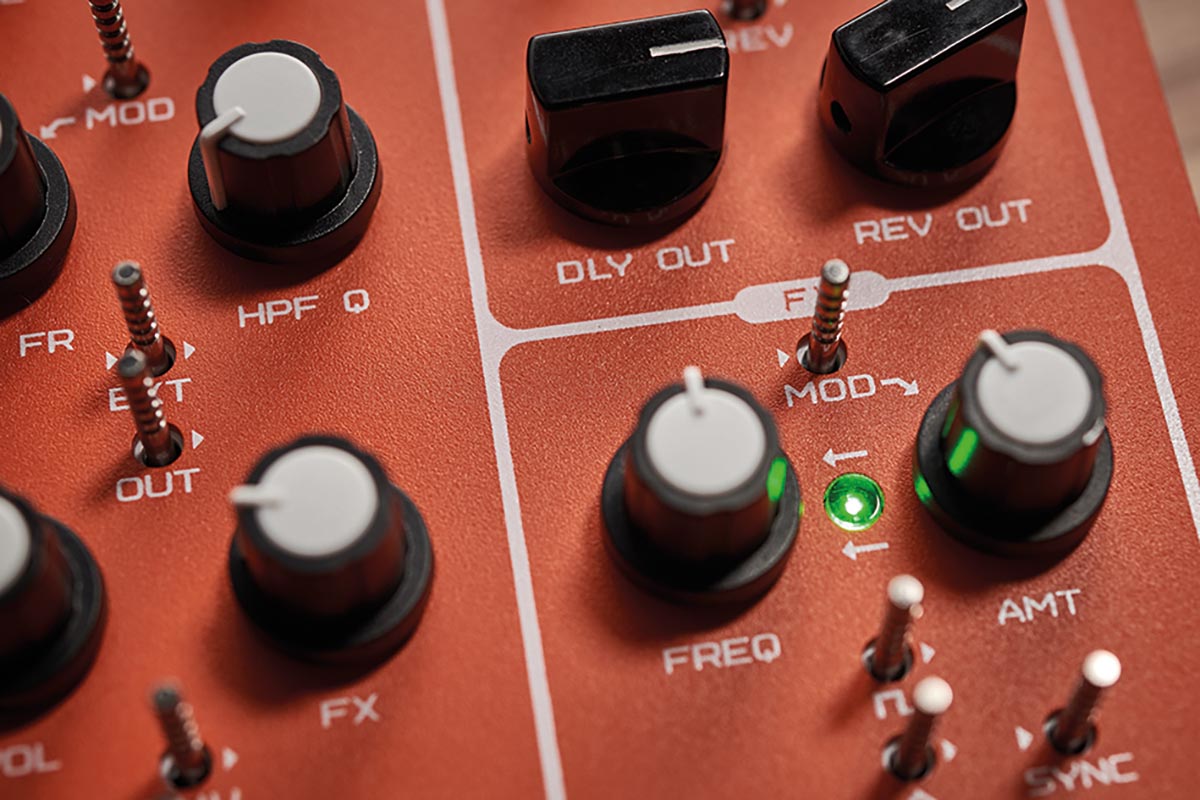
There were several occasions that we’d be fairly certain we knew what we were doing with its sound generation and sequencing tools, only for a patch or function to throw up something rather unexpected – and we were never entirely sure whether it was us or the machine at fault.
The effects are made to encourage experimentation and modulation. With creative patching, you can coax out wonderful, dub-like effects and weird textures
The final major string to Pulsar’s bow is its array of onboard effects. These are divided into two sections – an analogue master distortion and a DSP delay and reverb. The former of these is a pretty simple affair, with just Drive and Mix controls, but it complements the sounds nicely and can add real grit and heft to sounds.
The DSP effects are more complex; here we get distinct reverb and delay channels. Sounds can only be sent to one of these at a time using the internal effects sends, but both have patchable inputs and outputs, so you can route any sound to both and set up various cross-effect/feedback routings.
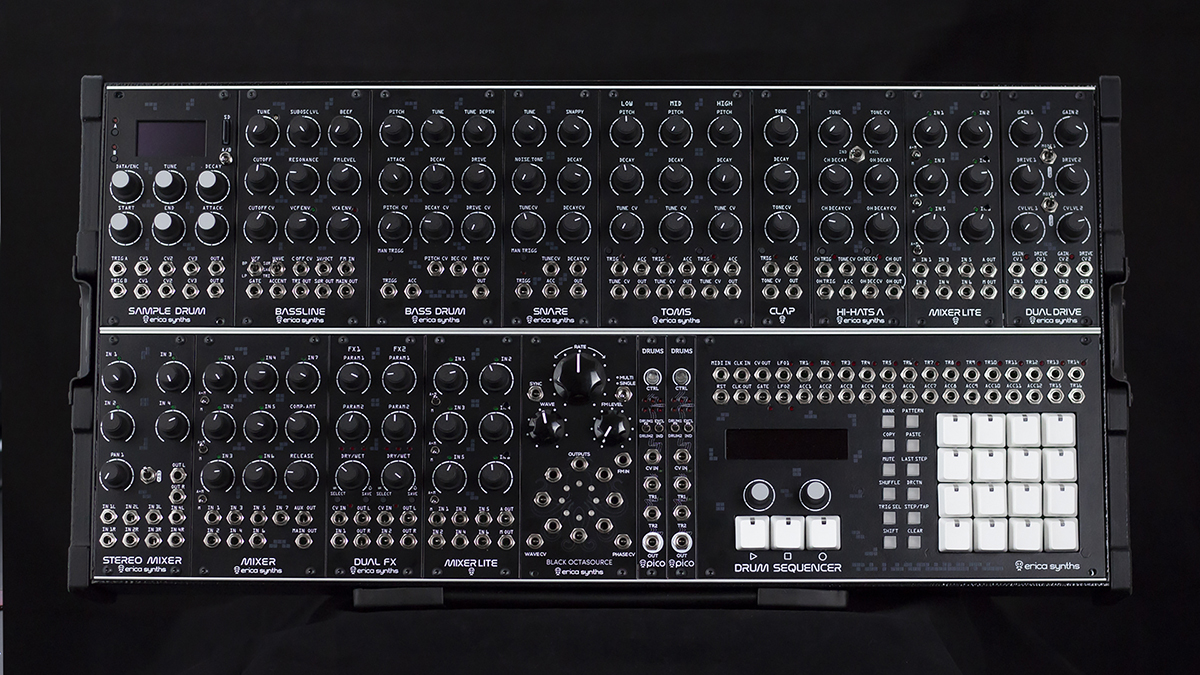
• Erica Synths Techno System
You need to look to full modular systems to match the patching potential of the Pulsar. Erica’s Techno system is similarly handy at interesting rhythms and sounds.
• Moog Sound Studio
These new bundles from Moog contain a DFAM and either a Mother-32 or Subharmonicon. As a full package, they cover similar ground to the Pulsar, with equally experimental credentials.
There are three modes for the effect module – linked for the delay and reverb – offering a band-pass 1-tap delay and hall reverb, a 2-tap delay and different hall algorithm, and pitch-shifted delay and reverb. Although both effects channels are mono, the 2-tap delay does offer a stereo mode whereby the delay and reverb outputs become stereo channels with the two effects mixed.
The effects are made to encourage experimentation and modulation, offering multiple patch points routed to parameters including delay time, pitch, feedback and DSP clock modulation. With creative patching, you can coax out wonderful, dub-like effects and weird textures.
As a complete package, Pulsar-23 won’t appeal to everyone – this is no do-it-all workhorse. Creating sounds is as much a process of happy accidents as careful sound design. It is, however, a genuinely unique instrument, and one designed to inspire creativity rather than just be weird for the sake of it. In all, this is a thoughtfully designed and hugely powerful music machine – and we’re very glad it exists.
MusicRadar verdict: Pulsar-23 is pretty eccentric, but it’s also one of the most powerful, creative and inspiring instruments on the market right now.
Hands-on demos
Soma Laboratory
loopop
Suture Sound
Perfect Circuit
sonicstate
Specifications
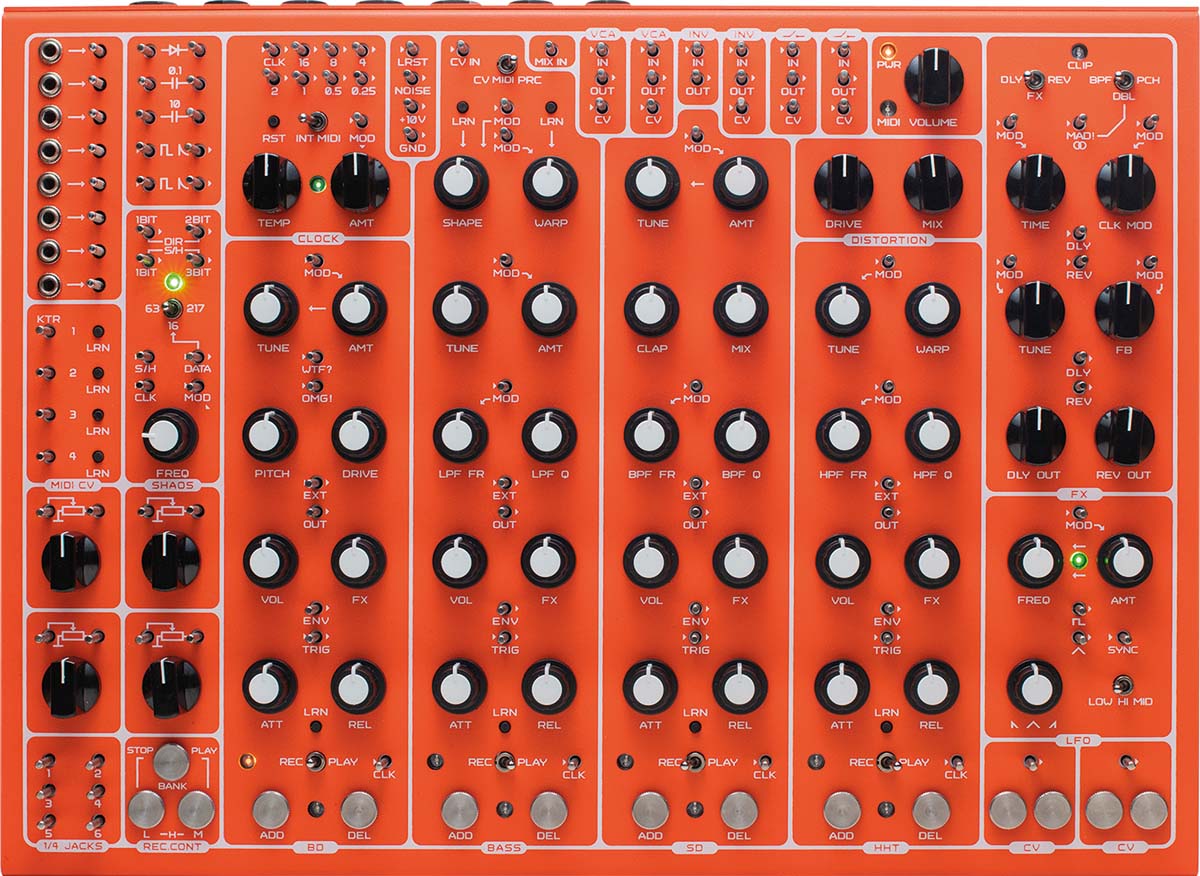
- TYPE: Semi-modular drum machine
- KEY FEATURES: Four-part analogue percussion synth with looping sequencers, copious patch points, distortion, DSP reverb and delay, and a multitude of utilities and control processors
- CONTACT: Soma Laboratory
I'm the Managing Editor of Music Technology at MusicRadar and former Editor-in-Chief of Future Music, Computer Music and Electronic Musician. I've been messing around with music tech in various forms for over two decades. I've also spent the last 10 years forgetting how to play guitar. Find me in the chillout room at raves complaining that it's past my bedtime.
“Every one of them said yes without hesitation": Hank Marvin and Roger Taylor have just remade a '60s classic for charity
Do you know where your money goes when you buy a gig ticket? A new report breaks it down
“Every note counts and fits perfectly”: Kirk Hammett names his best Metallica solo – and no, it’s not One or Master Of Puppets
